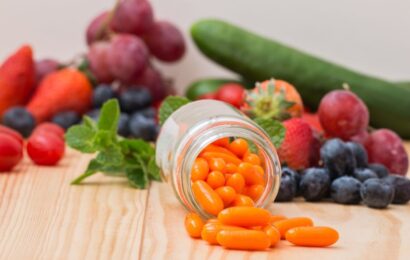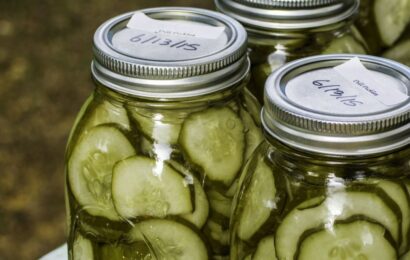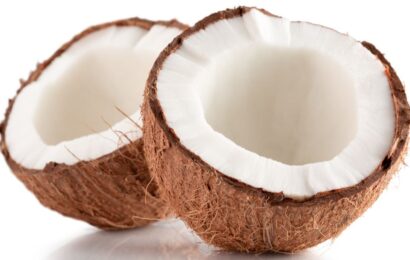Beer is a popular alcoholic beverage that many people enjoy year-round, but it seems to be a big hit during the hot summer months. There’s something about having a refreshing beer during a ball game or at a summertime cookout with family and friends. But is beer OK to drink, especially if you have diabetes? Does it have any effect on blood sugars? Read on to learn more.
What is beer?
Beer gardens, craft beer, and artisanal beers are “in” right now, but the reality is that beer isn’t anything new. The first fermented grain beverage came about around 12,000 years ago, when hunter-gatherer tribes began brewing beer from various grains. Beer made from barley likely originated in the Middle East about 5,000 years ago. Fast-forward to the Middle Ages when monks and artisans began brewing beer with hops, the dried flowers of the hop plant that are used to add flavor and bitterness to beer. Today’s beer is a fermented alcoholic beverage made with a grain, hops, yeast, and water.
What are the different types of beer?
Walk into any liquor store, bar, or restaurant and you’re faced with a seemingly endless array of different types, or styles, of beer to choose from. There are more than 100 types of beer and at least 2,500 different brands that are made in the U.S. But, to simplify things a bit, beer is either an ale or a lager.
Ales are fermented with top-fermenting yeast between 60°F and 70°F; lagers are fermented with bottom-fermenting yeast at temperatures between 35°F and 50°F. Ales styles include India pale ale (IPA), New England-style IPA, Imperial IPA, stouts, and gose, which is a wheat ale. Lagers, which is the most popular beer style, includes American lagers (e.g., Budweiser, Coors Light, Michelob Ultra, and Corona), Mexican lagers, Vienna lagers, Pilsners, and Helles.
Light beer is lower in calories and alcohol than regular beer, but it’s brewed the same way as regular beer. And nonalcoholic beer is beer that has about 50% fewer calories than regular beer (and little to no alcohol).
To get cutting-edge diabetes news, strategies for blood glucose management, nutrition tips, healthy recipes, and more delivered straight to your inbox, sign up for our free newsletter!
How much alcohol is in beer?
The alcohol content of beer can vary widely. For example, regular beer is usually about 5% alcohol, but can be as high as 10%. Light beer, which is still beer but lower in calories and alcohol, still contains alcohol — about 4%. For comparison, wine is typically about 12% alcohol, and distilled spirits, such as gin, rum, and vodka, are about 40% alcohol. Nonalcoholic beer may be 0% alcohol, but many brands are 0.5% alcohol.
In the United States, a “standard” drink contains about 14 grams (g) of pure alcohol. A standard drink is:
- 12 ounces of regular beer
- 5 ounces of wine
- 1.5 ounces of distilled spirits
Beer nutrition
Beer tends to be higher in carbohydrate compared with other alcoholic beverages, such as wine or liquor. However, the carb and calorie content of beer can vary widely. Unfortunately, beer bottles and cans typically don’t carry a Nutrition Facts Label. That’s because alcohol is regulated by the Alcohol and Tobacco Tax and Trade Bureau (TTB), not the Food and Drug Administration. However, you can find nutrition information for alcohol on the manufacturer’s website or on nutrition websites such as the USDA’s FoodData Central or CalorieKing. Let’s look at a few examples:
Coors Banquet Lager Beer, 12 ounces
- 145 calories
- 13 g carbohydrate
- 1 g protein
- 0 g fat
- 15 mg sodium
- 13 g alcohol
Guinness Draught Beer, 12 ounces
- 126 calories
- 10 g carbohydrate
- 1 g protein
- 0 g fat
- 20 mg sodium
- 11.7 g alcohol
Amstel Light Pale Lager, 12 ounces
- 95 calories
- 5 g carbohydrate
- 1 g protein
- 0 g fat
- 5 mg sodium
- 10 g alcohol
Heineken 0.0% Alcohol Free Beer
- 69 calories
- 16 g carbohydrate
- 0.8 g protein
- 0 g fat
- 5 mg sodium
- 0 g alcohol
Interestingly, light beers have about half the carbs as regular beer, while nonalcoholic beers have just as much carb as regular beer (although as mentioned above, they have fewer calories than regular and light beer). Also, note that beer doesn’t contain any fat. However, alcohol provides 7 calories per gram (almost as much as fat, which provides 9 calories per gram). So, even though beer is fat-free, it’s not necessarily a low-calorie beverage.
Beers that are under 100 calories and that have no more than 5 grams of carb per 12-ounce serving include:
- Michelob Ultra
- Amstel Light
- Miller Light
- Beck’s Premier Light
Can you drink beer if you have diabetes?
Most people who have diabetes can drink alcohol, including beer, in moderation. “Moderation” is defined as no more than two drinks per day for men and no more than one drink per day for women. In terms of beer, a “drink” is 12 ounces.
If you take insulin or types of diabetes pills, such as sulfonylureas, that can increase the risk of hypoglycemia (low blood sugar), you should avoid drinking beer on an empty stomach. In other words, always eat a source of carbohydrate when drinking beer. Check your blood sugar often when you drink beer (or any other type of alcoholic beverage, for that matter), since alcohol can lead to low blood sugars up to 24 hours after you stop drinking.
If you have other health conditions, such as liver disease, kidney disease, or neuropathy, talk with your provider about whether drinking alcohol is safe for you. Keep in mind that alcohol can interact with other medications, as well.
Finally, remember that beer contains calories, so from a weight-management standpoint, it’s best to go easy on how much you drink, and choose a light beer to save on calories. Too many calories from alcohol or food can increase belly fat (hence the term “beer belly”), which contributes to health problems such as heart disease, high blood pressure, type 2 diabetes, and liver disease.
Want to learn more about diabetes and alcohol? Read “Drinking and Diabetes: Seven Facts to Know,” “Diabetes, Alcohol, and the Holidays,” and “Beer and Health: Nine Questions Answered.”





